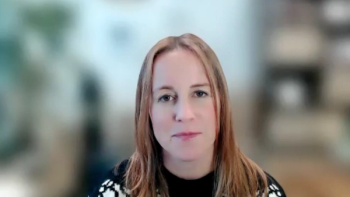
Dr Julia Adler-Milstein Addresses the Impact of Health IT on Disparities
New health technologies will not automatically address disparities-it all depends on how those tools are used, explained Julia Adler-Milstein, PhD, assistant professor at the School of Information and the School of Public Health at the University of Michigan.
New health technologies will not automatically address disparities—it all depends on how those tools are used, explained Julia Adler-Milstein, PhD, assistant professor at the School of Information and the School of Public Health at the University of Michigan. It’s important to see if patients can access and understand their data, while ensuring that these technologies eliminate rather than exacerbate disparities.
Transcript (slightly modified)
What effects do health IT and health technologies have on disparities?
In terms of disparity, there’s a lot of potential for these tools to be deployed in a way that addresses disparities. But by the same token they could be used to sort of perpetuate the current system for which we know there are real disparities. So I think the technology itself is not going to do that much, it’s really going to depend on how it’s used.
So there was discussion in the session [at the AcademyHealth's National Health Policy Conference] about telemedicine and improving access and that’s one clear way in which disparities, at least, and access could be addressed. And I think that, again, getting your data and knowing how to use it well was going to require a certain degree of health literacy and patient engagement and activation and so I think then the question is: "will that worsen disparities?" If you have a group of patients who are active and engaged and able to take this data and use it, and then a group of patients who aren’t—so I think it’s really an open question.
I think it could help it, I think it could hurt, I think it could have no impact and, again, it’s one of the big questions that we’re going to have to do. We’re going to have to see how it all unfolds. But none of this should stop the progress in terms of getting patient access to the data, getting these tools out there. But there’s something, at least from a policy perspective, that we need to keep our radar on for, and if we start to see disparities make sure that we’re going to be able to address the upstream causes of that. Which, again, I don’t think they’ll be technology issues I think they’ll really be about use of technology.
Newsletter
Stay ahead of policy, cost, and value—subscribe to AJMC for expert insights at the intersection of clinical care and health economics.













































